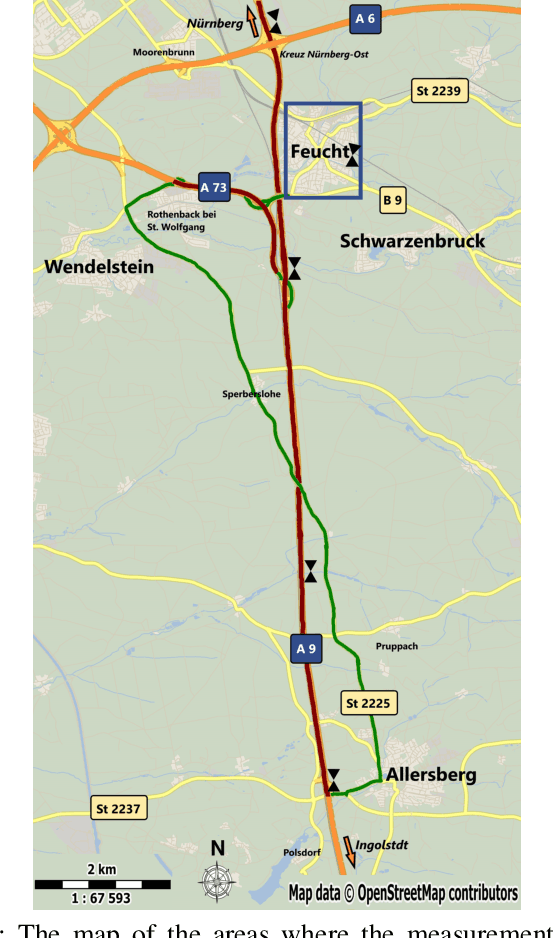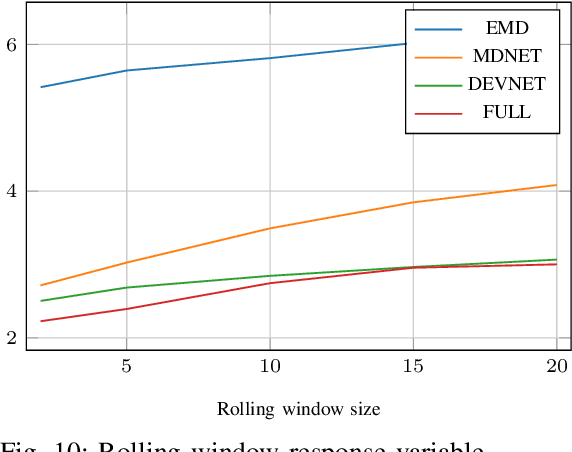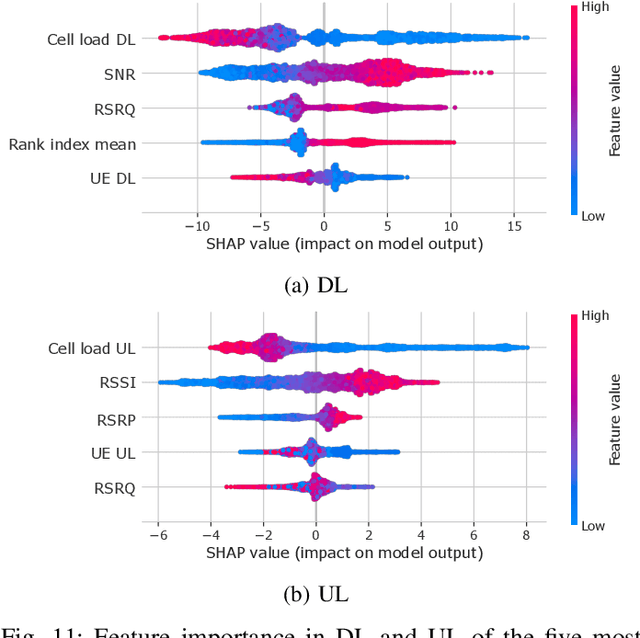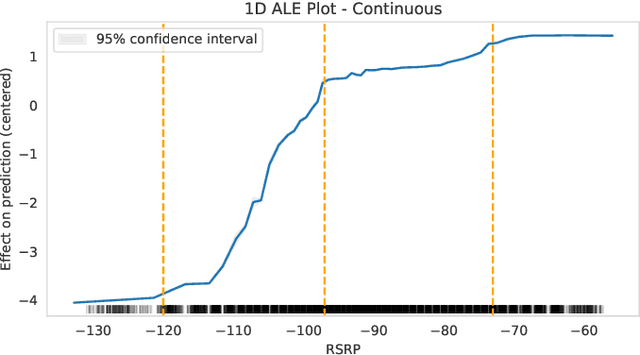Frank H. P. Fitzek
Communicating Smartly in the Molecular Domain: Neural Networks in the Internet of Bio-Nano Things
Jun 26, 2025Abstract:Recent developments in the Internet of Bio-Nano Things (IoBNT) are laying the groundwork for innovative applications across the healthcare sector. Nanodevices designed to operate within the body, managed remotely via the internet, are envisioned to promptly detect and actuate on potential diseases. In this vision, an inherent challenge arises due to the limited capabilities of individual nanosensors; specifically, nanosensors must communicate with one another to collaborate as a cluster. Aiming to research the boundaries of the clustering capabilities, this survey emphasizes data-driven communication strategies in molecular communication (MC) channels as a means of linking nanosensors. Relying on the flexibility and robustness of machine learning (ML) methods to tackle the dynamic nature of MC channels, the MC research community frequently refers to neural network (NN) architectures. This interdisciplinary research field encompasses various aspects, including the use of NNs to facilitate communication in MC environments, their implementation at the nanoscale, explainable approaches for NNs, and dataset generation for training. Within this survey, we provide a comprehensive analysis of fundamental perspectives on recent trends in NN architectures for MC, the feasibility of their implementation at the nanoscale, applied explainable artificial intelligence (XAI) techniques, and the accessibility of datasets along with best practices for their generation. Additionally, we offer open-source code repositories that illustrate NN-based methods to support reproducible research for key MC scenarios. Finally, we identify emerging research challenges, such as robust NN architectures, biologically integrated NN modules, and scalable training strategies.
Towards a Base-Station-on-Chip: RISC-V Hardware Acceleration for wireless communication
Jun 09, 2025Abstract:The evolution of 5G and the emergence of 6G wireless communication systems impose higher demands for computing capabilities and lower power consumption in the front-end and processing circuitry. Furthermore, the incorporation of Artificial Intelligence (AI)/Machine Learning (ML) in the Radio Access Network (RAN) introduces heightened computational needs and stringent low-latency requirements for both training and inference. The concept of a Base Station on Chip (BSoC) addresses those demands by consolidating of the signal processing, neural network computations and network management functions into a single chip. This new computing platform relies on a sophisticated hardware/software co-design to optimize performance, power efficiency, and scalability, enabling a compact, yet adaptable and intelligent base station solution for next-generation wireless networks. This research investigates the efficient implementation of conventional Channel Estimation (CE), massive Multiple Input Multiple Output (mMIMO), and beamforming kernels on a state-of-the-art RISC-V vector Digital Signal Processors (DSP) to capitalize on Data Level Parallelism (DLP). Moreover, it explores how RISC-V Vector Extensions (RVV) combined with custom instructions can effectively address the throughput and latency demands of LOW Physical Layer (PHY) kernels.
Deep Reinforcement Learning for the Joint Control of Traffic Light Signaling and Vehicle Speed Advice
Sep 18, 2023



Abstract:Traffic congestion in dense urban centers presents an economical and environmental burden. In recent years, the availability of vehicle-to-anything communication allows for the transmission of detailed vehicle states to the infrastructure that can be used for intelligent traffic light control. The other way around, the infrastructure can provide vehicles with advice on driving behavior, such as appropriate velocities, which can improve the efficacy of the traffic system. Several research works applied deep reinforcement learning to either traffic light control or vehicle speed advice. In this work, we propose a first attempt to jointly learn the control of both. We show this to improve the efficacy of traffic systems. In our experiments, the joint control approach reduces average vehicle trip delays, w.r.t. controlling only traffic lights, in eight out of eleven benchmark scenarios. Analyzing the qualitative behavior of the vehicle speed advice policy, we observe that this is achieved by smoothing out the velocity profile of vehicles nearby a traffic light. Learning joint control of traffic signaling and speed advice in the real world could help to reduce congestion and mitigate the economical and environmental repercussions of today's traffic systems.
The Story of QoS Prediction in Vehicular Communication: From Radio Environment Statistics to Network-Access Throughput Prediction
Feb 23, 2023



Abstract:As cellular networks evolve towards the 6th Generation (6G), Machine Learning (ML) is seen as a key enabling technology to improve the capabilities of the network. ML provides a methodology for predictive systems, which, in turn, can make networks become proactive. This proactive behavior of the network can be leveraged to sustain, for example, a specific Quality of Service (QoS) requirement. With predictive Quality of Service (pQoS), a wide variety of new use cases, both safety- and entertainment-related, are emerging, especially in the automotive sector. Therefore, in this work, we consider maximum throughput prediction enhancing, for example, streaming or HD mapping applications. We discuss the entire ML workflow highlighting less regarded aspects such as the detailed sampling procedures, the in-depth analysis of the dataset characteristics, the effects of splits in the provided results, and the data availability. Reliable ML models need to face a lot of challenges during their lifecycle. We highlight how confidence can be built on ML technologies by better understanding the underlying characteristics of the collected data. We discuss feature engineering and the effects of different splits for the training processes, showcasing that random splits might overestimate performance by more than twofold. Moreover, we investigate diverse sets of input features, where network information proved to be most effective, cutting the error by half. Part of our contribution is the validation of multiple ML models within diverse scenarios. We also use Explainable AI (XAI) to show that ML can learn underlying principles of wireless networks without being explicitly programmed. Our data is collected from a deployed network that was under full control of the measurement team and covered different vehicular scenarios and radio environments.
Berlin V2X: A Machine Learning Dataset from Multiple Vehicles and Radio Access Technologies
Dec 21, 2022Abstract:The evolution of wireless communications into 6G and beyond is expected to rely on new machine learning (ML)-based capabilities. These can enable proactive decisions and actions from wireless-network components to sustain quality-of-service (QoS) and user experience. Moreover, new use cases in the area of vehicular and industrial communications will emerge. Specifically in the area of vehicle communication, vehicle-to-everything (V2X) schemes will benefit strongly from such advances. With this in mind, we have conducted a detailed measurement campaign with the purpose of enabling a plethora of diverse ML-based studies. The resulting datasets offer GPS-located wireless measurements across diverse urban environments for both cellular (with two different operators) and sidelink radio access technologies, thus enabling a variety of different studies towards V2X. The datasets are labeled and sampled with a high time resolution. Furthermore, we make the data publicly available with all the necessary information to support the on-boarding of new researchers. We provide an initial analysis of the data showing some of the challenges that ML needs to overcome and the features that ML can leverage, as well as some hints at potential research studies.
Functional Split of In-Network Deep Learning for 6G: A Feasibility Study
Nov 14, 2022Abstract:In existing mobile network systems, the data plane (DP) is mainly considered a pipeline consisting of network elements end-to-end forwarding user data traffics. With the rapid maturity of programmable network devices, however, mobile network infrastructure mutates towards a programmable computing platform. Therefore, such a programmable DP can provide in-network computing capability for many application services. In this paper, we target to enhance the data plane with in-network deep learning (DL) capability. However, in-network intelligence can be a significant load for network devices. Then, the paradigm of the functional split is applied so that the deep neural network (DNN) is decomposed into sub-elements of the data plane for making machine learning inference jobs more efficient. As a proof-of-concept, we take a Blind Source Separation (BSS) problem as an example to exhibit the benefits of such an approach. We implement the proposed enhancement in a full-stack emulator and we provide a quantitative evaluation with professional datasets. As an initial trial, our study provides insightful guidelines for the design of the future mobile network system, employing in-network intelligence (e.g., 6G).
 Add to Chrome
Add to Chrome Add to Firefox
Add to Firefox Add to Edge
Add to Edge